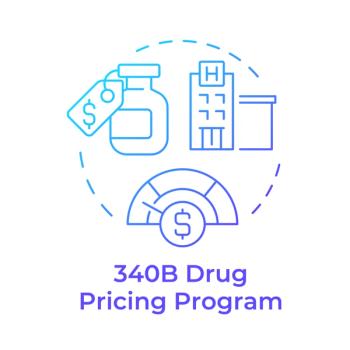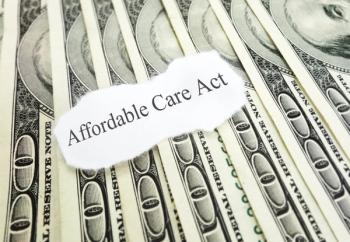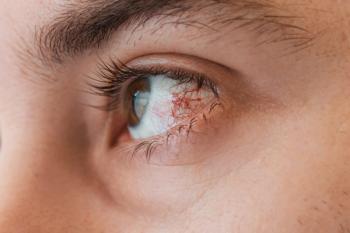
How Medicare's past impacts your plan, system today
On the 50th anniversary of Medicare, a look at the program's past, present, and future.
"Today, at this point in our history, we are privileged to contemplate new horizons of national advance and achievement in many sectors. But it is imperative that we give first attention to our opportunities-and our obligations-for advancing the nation's health. For the health of our people is, inescapably, the foundation for fulfillment of all our aspirations," said President Lyndon Johnson on January 7, 1965, in a speech to the U.S. Congress called
Related:
In Johnson’s speech, he talked of the country’s ability to "conquer" smallpox, malaria, yellow fever, and typhus. He spoke of polio, which had taken 3,154 lives in 1952, and had taken only five lives in 1964. Over the course of 20 years, he said, the country had seen death rates due to influenza fall by 88%, tuberculosis by 87%, and rheumatic fever by 90%.
During this speech, Johnson advocated for the creation of a program that would provide hospital insurance for the elderly under Social Security. He wanted to convince Congress to extend the promise of then-modern medicine to all Americans. What he got was passage of Medicare on July 30, 1965.
Medicare's early effects
Blumenthal, MDMedicare had an immediate impact on Americans 65 years of age and older-and this continues to be true today. "All of us with aging, sick parents rely every day on Medicare to keep their financial security and also our own because otherwise we would be paying those bills," says David Blumenthal, MD, president of the New York-based
Early impacts of Medicare included an increase in the rate of hospital admissions per 100 elderly Americans, from 18 to 21 annually between 1963 and 1970. The number of elderly who had cataract surgeries doubled between 1965 and 1975. Further, the proportion of elderly patients who had contact with a physician increased from 68% to 76% between 1963 and 1970.
Related:
Longer-term impacts of Medicare include an increase in life expectancy for Americans at the age of 65 by 15% between 1965 and 1984 (at least in part due to the program); and, today, only 2% of the elderly are without health insurance-a dramatic increase over the 48% who lacked health insurance in 1962.
Medicare today
AaronToday, Medicare covers about 49.5 million Americans. In 2030, the total number of Medicare beneficiaries is projected to reach 80 million. Henry Aaron, senior fellow in economic studies at the Washington, D.C.-based
"[Medicare] has improved dramatically over the course of its life. Despite Congressional unwillingness to let Medicare administrators use the leverage that [it] has as the largest single player for healthcare in the United States, Medicare has spurred a number of very important reforms in healthcare payment and delivery," he says.
Two of those reforms include the prospective payment system and the variety of experiments spawned by the Affordable Care Act to use payment mechanisms to "support, encourage, and nudge changes" in the organization of the delivery of healthcare, says Aaron.
Medicare: then vs. now
Medicare’s early advocates would like what they see in today’s Medicare program, says Greg Scott, vice chairman and U.S. health plans sector leader for New York-based
Most significantly, when Medicare was established it was the "first time there was a broad acknowledgement that for certain segments of the [healthcare] market, the market itself wasn’t going to be sufficient to provide health insurance to a particular part of the population," says Susan Dentzer, senior policy adviser for the Princeton, New Jersey-based
Those who pushed for Medicare back in 1965 would recognize certain features of the program as it looks today, says Dentzer. Still, they’d probably be surprised by the size of the population covered by Medicare-especially the growth ushered in by coverage for those with long-term disabilities and end-stage renal disease in 1972. "It would have been hard in the 1960s to have imagined the growth in outpatient care; that’s been enormous," she says.
Related:
Dentzer says the focus on inpatient care with Medicare was very much in line with the investment in building hospitals, which was spurred by the Hospital Survey and Construction Act (also known as the Hill-Burton Act after its co-sponsors) in 1946. Back then, the focus was on keeping patients in the hospital, as was President Johnson’s experience when he was recovering from a heart attack in 1955. Blumenthal writes in his book called
Medicare expands
Notably, Medicare has provided coverage to Americans with long-term disabilities such as amyotrophic lateral sclerosis (ALS) and multiple sclerosis (MS) since 1972. Coverage for hospice has been available to Medicare recipients since 1982. Additional benefits provided over the years by Medicare include various preventative services and, of course, prescription drug coverage, both of which were made possible by the
"Medicare benefits the elderly and their families every day, in terms of access to care and the quality of care and healthcare status," says Blumenthal. "And that, I think, is an undeniable part of the Medicare legacy. There is also, of course, the fact that people with [end-stage] renal failure are virtually guaranteed full healthcare coverage and people who can’t work because of a disability, whether it’s physical of behavioral are also guaranteed the sort of coverage that elderly Americans have.
"[Medicare] is a big part of our social safety net, and anyone who has a child who is mentally handicapped, has a brother, sister, son, daughter who has lost a limb because of cancer or an accident or is otherwise disabled, this is another source of peace of mind and quality of life. These are all things that we take for granted now, but were not available before 1965 or before Medicare was expanded in 1972," he says.
Medicare experiments
NeumanU.S. healthcare has changed over the last 50 years, and Medicare itself has evolved in response to changes in the healthcare delivery system, in response to changes in the policy environment, and in response to the changing needs of its coverage population, says Tricia Neuman, senior vice president of the Menlo Park, California-based
Related:
"Medicare has gradually changed over the decades from a program that pays bills to a program that attempts to affect the organizational financing of healthcare for the purpose of improving the quality of care and containing its expenses," says Blumenthal. While that change has been gradual over the longer term, recently it has accelerated. He points to the introduction of the prospective payments system in 1983-the DRG system-where Medicare transitioned from paying what hospitals charged to setting prices for the services provided by hospitals.
In that process, Medicare started to experiment with bundled care, which meant, as Blumenthal puts it, "Instead of paying for each Band-Aid, each IV bag, that [Medicare] was going to pay for the hospitalization, for a particular condition. And the hospital had to figure out how to stay within that price or 'eat the difference,'" he says.
He traces those early experiments 30 years ago to the announcement by U.S. Department of Health and Human Services Secretary Sylvia Mathews Burwell in January that 50% of payments would be in value-based payment structures by the end of 2018. "That’s the first time Medicare has ever said that a certain amount of its fee-for-service funding would be associated with performance, and these targets are ambitious," says Blumenthal. "But they’re very, important as messages to the [healthcare] delivery system."
Scott is a bit more measured in his assessment of the current use of value-based care within Medicare. "Value-based care is still more of an aspiration than a programmatic reality," he says. Still, he believes that Medicare’s move in the 1980s toward prospective payment not only changed the program, it changed the entire healthcare system. "In 1983 and 1984, when DRGs were rolled out in Medicare Part A, they started a payment revolution. Many of the large insurance companies soon followed suit."
Medicare Advantage
Change has been a constant since Medicare was established 50 years ago. Today, nearly one-third of people are in Medicare Advantage plans. Medicare HMOs have been around for many decades, but over the years there has been a significant expansion in the role of private plans, both in terms of what’s now called the Medicare Advantage Program, but also in the context of Part D, the drug benefit, which is available exclusively through private plans.
"The impact is [this] has led to a gradual change in the underlying structure of the program and how people get their coverage, because more and more people are getting their benefits through Medicare HMOs and other private plans," says Neuman.
Related:
Seniors continue to sign up for Medicare Advantage plans, says Scott. He notes that there hasn’t been the type of retrenchment among Medicare Advantage payers that has taken place in the past, which saw the exit of private payers from the Medicare program.
Medicare's future
The expected growth in Medicare beneficiaries from its current 49.5 million to 80 million in 2030 keeps the Centers for Medicare & Medicaid Services (CMS), advocates, policy analysts, and members of Congress up at night. In an
Related:
Scott refers to Medicare’s use of DRGs and outpatient prospective payment rates as the "North Star" for the program, and that private payers involved in Medicare Advantage will continue to follow that "North Star." CMS has many tools available to it, "but there’s no tool like the payment tool to effectuate changes that matter in Medicare," he says.
While Scott says that CMS’ early experiments with value-based care have been modest and not entirely successful, he believes the agency "can learn from its early forays into value-based care and make some of the bigger bang changes that will impact both providers and other stakeholders." He remains optimistic, despite what he sees as some overly modest or potentially too incremental methods of integrating Medicare and Medicaid for "dual eligibles." Addressing the needs of this patient population that relies on both Medicare and Medicaid is one of the top five things that CMS needs to figure out," says Scott.
Related:
He also highlights the increased need for the various agencies and departments of the federal government to work more closely together to fully harness the potential of the innovation occurring in healthcare technology, biotech, and clinical care. "We need to support CMS. And not just CMS, but how the agency works with the Federal Drug Administration and the Centers for Disease Control [and Prevention] and the National Institutes of Health," he says. "The pace of change is exponentially hard for us to keep up with, especially a federal agency. There’s a whole constellation of Health & Human Services' agencies and policy makers who need to be aligned with innovation in science, technology, and clinical modalities."
It doesn’t take a big leap of the imagination to assume the private sector will want to learn from the successes of Medigap programs and learn how to adopt these models, says Neuman. Still, she says a big challenge facing Medicare in the future is how the agency will figure out financing care for the growing Medicare population. "Even if Medicare is successful in limiting the growth in spending per beneficiary, which it has been in recent years, there is the undeniable reality of more people aging into the program and the need to find a way to pay for their care."
Newsletter
Get the latest industry news, event updates, and more from Managed healthcare Executive.






















































